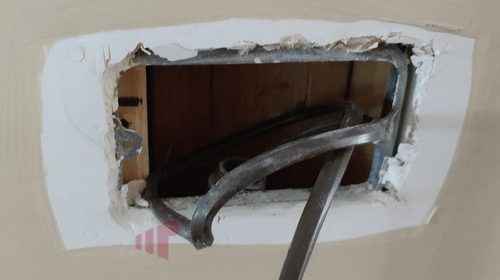Ecobee + electrical box = problem

Having recently moved into a new[ish] house, the process of installing some “smart” gadgets has begun. The list is long, but with a couple decidedly unsmart thermostats present it was important to get that sorted ASAP. There are a few smart thermostats available; each with their own plus/minus. For me the most important feature was a strong multi-sensor approach to temperature management. Which is the main reason I ended up going with a couple Ecobee 3s. As expected in a modern house, the basic installation was really quick. Although I did go off-script after discovering that while the original thermostats didn’t use the “C”, the low voltage wire bundle had a free wire, so it was really easy to use it and skip their power extender kit. Unfortunately I hit a major snag when it was time to close everything up – with the Ecobee lacking any sort of electrical box mount.
I was able to find a couple different approaches on the internet, but none that I was really happy with. So I decided to make a mounting plate.
It would have been more resilient to use some 1/8” plywood because it is stronger than the pressboard I went with, but that was what I had on hand J. Using an electrical box cover as a rough template, it was straightforward to shape out a bracket that would fit into the horizontal hole where the old thermostat was mounted. Once in place it was simple to attach the Ecobee and get the flush, finished look I was going for.
The really curious thing, is that Ecobee does not provide something like this in the box. I would expect that the majority of their sales are to people who will replace an existing thermostat. Seems like a no brainer to me.

I’m about to do the same
I’m about to do the same thing, as I also have an electrical box behind my thermostat. Were you able to screw the Ecobee directly to your pressboard? I’m concerned that the space between the Ecobee mounting holes will be too wide for the mounting plate.
Yep. Just drilled some small
Yep. Just drilled some small pilots first, and screwed them slowly in by hand to reduce risk of messing up the pressboard.